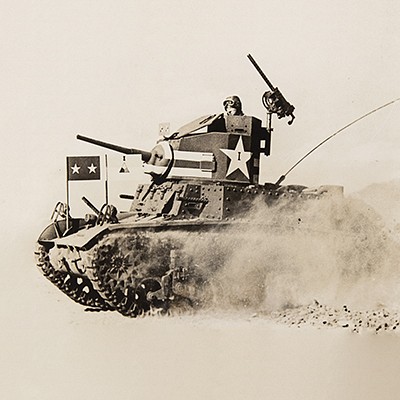Union Soldiers' Diary: Entries on Lee, Grant, and Sheridan
Two ways to bid:
- Leave a max absentee bid and the platform will bid on your behalf up to your maximum bid during the live auction.
- Bid live during the auction and your bids will be submitted real-time to the auctioneer.
Bid Increments
| Price | Bid Increment |
|---|---|
| $0 | $5 |
| $50 | $10 |
| $200 | $25 |
| $500 | $50 |
About Auction
May 18, 2023
RR Auction support@rrauction.com
- Lot Description
Unusual 'battlefield pick-up' Civil War-era diary containing entries from two different Union soldiers, Bandsman Hollis J. Haven of the U.S. Brigade Band and Private John Brisk Rush of Company H, 15th New Jersey Volunteers. The diary begins on January 1, 1865, with about 30 pages of Haven's daily entries, chronicling rehearsals, parades, picket attacks, weather conditions, deserters, and a surprising visit from superiors on March 25th: "Presdt. Lincoln & Genl. Grant was here, rather an exciting day." The Massachusetts musician abruptly ends his portion of the diary on April 1, 1865, recording "Reports of Genl. Sheridan getting whipped &c." Haven, who survived another sixty years, may have lost the diary in the confusion of preparing to pursue Lee's fleeing army on April 2, 1865.
The diary was evidently picked up by Private John Brisk Rush, and subsequently used to record a detailed, 25-page account of his military career, from his inception into Federal service in August 1862 through the end of the war. Unlike Haven's day-by-day entries, Rush's chronicle takes a narrative form, likely written after the war, and focuses on the battles in which he participated—among them Salem's Church, Gettysburg, the Wilderness, Spotsylvania, Fisher's Hill, Hatcher's Run, and the final pursuit of General Robert E. Lee. A highlight of the account is a description of the defeat of Jubal A. Early at the Battle of Cedar Creek, famed for Philip Sheridan's heroic rallying ride: "The rebels surprised the 9 Corps camp. They became panic stricken & left every thing. The panic extended to the 19 Corps & by the time the 6 Corps could form the rebels was on all sides‰Û_we was forced back 2 miles. Here the men rallied‰Û_& the rebels checked, At this point Gen. Sheridan made his appearance & a shout arose from the men as he passed along the line. An advance was ordered & in less than an hour the rebels was in full retreat hurried by our cavalry. The battle resulted in the recapture of all we had previously lost besides 4000 prisoners—nearly all their artillery-wagons, ambulances & small arms."
Other excerpts from Rush's narrative: "At Fredericksburg fought the rebels but had to recross the River‰Û_started on Burnside's famous Mud March‰Û_got stuck in the mud & returned to camp‰Û_left camp & crossed over to Fredericksburg a second time—drove the rebels from the town & the heights—fought them at Salem Church‰Û_marched to Gettysburg—the battle was fought on the 2nd & 3rd‰Û_moved to Spotsylvania, formed a line‰Û_hard fighting‰Û_Gen. Sedgwick killed while superintending the erection of a battery." He also mentions the capture of rebel prisoners of war, burying the dead, pursuing Lee, and, finally, returning home on June 2, 1865.
The leatherbound diary measures 3.5 x 6 closed, and is in good to very good condition with a split and broken spine, most pages unbound and separated, and general wear and soiling throughout. A fascinating, dual first-person account of varied events during the Civil War. Accompanied by a mounted albumen photo of Philip Sheridan in uniform. - Shipping Info
-
Bidder is liable for shipping and handling and providing accurate information as to shipping or delivery locations and arranging for such. RR Auction is unable to combine purchases from other auctions or affiliates into one package for shipping purposes. Lots won will be shipped in a commercially reasonable time after payment in good funds for the merchandise and the shipping fees are received or credit extended, except when third-party shipment occurs. Bidder agrees that service and handling charges related to shipping items which are not pre-paid may be charged to a credit card on file with RR Auction. Successful international Bidders shall provide written shipping instructions, including specified Customs declarations, to RR Auction for any lots to be delivered outside of the United States. NOTE: Declaration value shall be the item’(s) hammer price and RR Auction shall use the correct harmonized code for the lot. Domestic Bidders on lots designated for third-party shipment must designate the common carrier, accept risk of loss, and prepay shipping costs.
-
- Buyer's Premium



 EUR
EUR CAD
CAD AUD
AUD GBP
GBP MXN
MXN HKD
HKD CNY
CNY MYR
MYR SEK
SEK SGD
SGD CHF
CHF THB
THB















